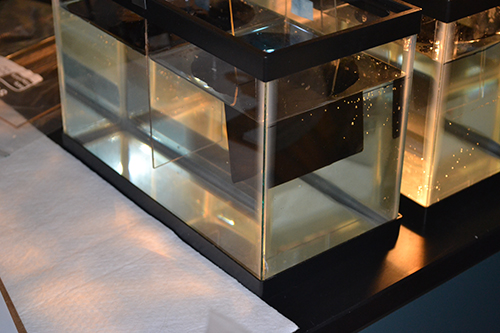Laboratory Tests of Oil Slick Thickness
MARCH 3, 2017--The week of February 20, OR&R scientists continued their ongoing Deepwater Horizon Lessons Learned effort, by conducting laboratory tests of oil slick thickness at the University of South Florida.
In this project, managed by the Oil on Water Workgroup, experts compared three different, physical measurements of slick thickness using Plexiglas dip plates, sorbent pads, and a new, innovative remote-controlled sampling device. Additionally, each method assessed consistency/variability factors, as well as minimum/maximum thicknesses. Results of these controlled laboratory tests allow OR&R scientists to understand the limitations of some oil slick measurement methods, and the best field measurement options to use for the environmental conditions that they encounter. This new information helps validate the thickness measures we make from airborne and satellite remote sensing during an oil spill incident. These assessments will improve OR&R’s best practices and appropriate use of remote sensing platforms and sensors for both response and damage assessment of future spills. Members of the Oil on Water Workgroup are: George Graettinger, Lisa DiPinto, Dan Hahn, Heather Forth (Abt), and Oscar Garcia (FSU/Water Mapping), as well as USF staff and students.
Please contact George.Graettinger@nooa.gov or Lisa.Dipinto@noaa.gov for further information.
Go back to OR&R Weekly Report.

